Recently, one of the main directions in biology is the researches concerning conservation of biodiversity, species gene-bank and their bio-productivity. Biodiversity is studied at different levels of living systems. Currently, the study of biodiversity at the level of chromosomes attracts the researchers’ attention, as differentiation at the level of karyology in isolated micropopulations is not always accompanied by morphological variability.
The study of chromosomal variability has great importance for assessment of genetic potential of wild animals. Stability of cytogenetic indexes of animals can be used as a biological indicator of interaction with the environment and identification of the consequences of environmental impacts. Since mammals are adjusted to life in different environmental conditions, their biological diversity is also emphasized. Therefore studies of mammals’karyotypes determine originality of populations within species, and some peculiarities of individual variability at the initial phase of divergence being a valuable factual material of biodiversity of mammals’species. The consequences of isolation leave their mark on karyotypes, which isexpressed in chromosomal polymorphism within the species at the level of population. Solution of these issues has great value for the development of the theory and practical problems of environmental cytogenetics. Such studies assess the impact of the environment on heredity and determine the continuity of exposure to environment, provide an opportunity to determine the causes and level of variability, as well as the driving force of evolution.
Materials and methods of research
The expeditionary gathering of animals carried out in the area of Kemin region and laboratory studiesserved as the object of the study. Specimens of mitotic chromosomes were prepared of bone marrow cells according to the standard method [8, 247].
Hemiechinus auritus Gmclin. The karyotype ofeared hedgehog of Kemin population consists of diploid set 2n = 48, number of limbs NF = 96. Our findings agree with the literature data. According to the obtained results the karyotype autosomes of Kemin population consist of gradually decreasing row of 17 pairs of metacentric, 6 pairs of submetacentric chromosomes. In a row of metacentric chromosomes 2 pairs – the smallest metacentric chromosomes are found. While comparing karyotypes of spatially andbiotopically isolated populations of Hemiechinusauritus Gmelin biotopical and cytogenetic originality of karyotypes can be watched. According to morphology of two-armed chromosomes and the results of all studies stability can be noted.
Pipistrellus pipistrelius Schreber. The karyotype of common pipistrelle, inhabiting in Kemin region, consists of the diploid number of chromosomes 2n = 44. Arms of autosomes NFa = 50. Autosomes consist of 3 pairs of large metacentric, 1 pair of medium sized submetacentric chromosomes and gradually decreasing row of 17 pairs of acrocentric chromosomes. In a row of acrocentric chromosomes 3 pairs of the smallest acrocentrics can be observed. Sex chromosomes of male consist ofmetacentric and submetacentric chromosomes. While comparing the obtained data of common pipistrelle’skaryotype of Kemin population with other data it may be noted that the karyotype has spatial and biotopical stability.
Marmota baibacina Kastschenko. The karyotype of gray marmot of Kemin population has the following peculiarities. Diploid number of chromosome set is 2n = 38. Autosomes arms NFa = 70. 36 autosomes consist of 6 pairs of metacentric, 6 pairs of submetacentric, 5 pairs of subtelocentric and 1 pair of acrocentric chromosomes. X chromosome of metacentric, Y chromosome of submetacentric chromosome.While comparing the obtained data with other literature data, according to the number of diploid set the karyotype is the same all through the life, but according to the morphology it has spatial and biotopical chromosomal polymorphism.
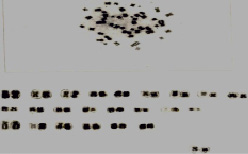
Fig. 1. The karyotype Hemiechinus auritus Gmclin of Kemin population
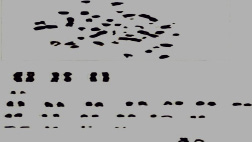
Fig. 2. The karyotype Pipistrellus pipistrelius Schreber of Kemin population
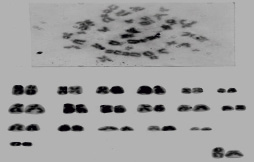
Fig. 3. The karyotype Marmota baibacina Kastschenko of Kemin population
Sicista tianschanica Salensky.In the analysis of the karyotype of Tien Shan birch mice of Kemin population, we determined that the diploid number of chromosome setlike the karyotype of Issyk-Kul population is 2n = 32. But when comparing the morphology of the chromosomes of karyotypes of both populations we found out their morphological variability. Karyogram was made in each group according to the gradually decreasing row. Autosomes consist of four groups of chromosomes. The first group consists of 5 pairs of metacentric chromosomes, two of them are large, two are medium, and the other are of small size. The next group consists of 4 pairs of submetacentric chromosomes, one pair which is large, the others are ofmedium size. The third group consists of 3 pairs of subtelocentric chromosomes. One pair of them is large, one pair is middle and the last pair is smallest. The last group consists of 3 pairs of acrocentric chromosomes. Sex chromosomes are composed of submetacentric and subtelomeric chromosomes. We note that according to our data, karyotypes of isolated micropopulations of Sicistatian schanica typehavespatial and biotopical chromosomal polymorphism.
Apоdemus sylvaticus Linnaeus. According to our data, the karyotype of Kemin population consists of the diploid number of chromosomes 2n = 48. Arms of autosomes NFa = 46. All chromosomes are acrocentrics. They consist of gradually decreasing row. Sex chromosomes are composed of acrocentric chromosomes different insize. When comparing the karyotypes of spacially and biotopically isolated populationsit can be found out that the diploid number and morphology of chromosome set is stable.
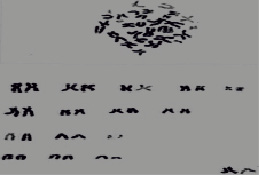
Fig. 4. The karyotype Sicista tianschanica Salensky of Kemin population
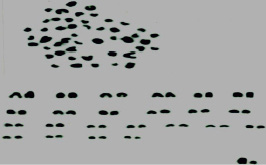
Fig. 5. The karyotype Apоdemus sylvaticus Linnaeus of Kemin population
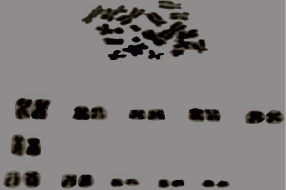
Fig. 6. The karyotype Cricetuius migratoriys Pallas of Kemin population
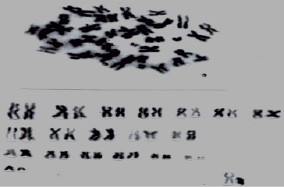
Fig. 7. The karyotype Meriones tamariscinus Pallas of Kemin population
Cricetuius migratoriys Pallas. According to our data, the karyotype of gray hamster of Kemin population consists of diploid number of chromosomes 2n = 22. Chromosome arms NFa = 44. Chromosomes in karyogram make 3 groups. The first group is from gradually decreasing row of 5 pairs of metacentric chromosomes. The second group consists only of 1 pair of submetacentric chromosomes. The third group – of 5 pairs of subtelocentric chromosomes. The sex chromosomes are not identified. When comparing the obtained data with the literature data, the morphology of chromosomes is stable.
Meriones tamariscinus Pallas. According to our data, the karyotype of tamarisk gerbil of Kemin population consists of diploid number of chromosomes 2n = 40. Arms of autosomes NFa = 74. 38 autosomes consist of four groups. The first group is from gradually decreasing row of 7 pairs of metacentric chromosomes. The second group consists of 5 pairs of submetacentric chromosomes, the third group – of6pairs of subtelocentric chromosomes. The last group is composed of only 1 pairof acrocentric chromosomes. Sex chromosomes are composed of metacentric chromosomes different in size. During karyological studies, point chromosome sets – acentrics were found on some metaphase plates. Cells with such peculiarities comprise 1.47 % of the total number of analyzed sets. We associate this peculiarity of karyotype of tamarisk gerbil of Kemin populations with high natural radiation background of some local parts of areal of “living space”. During capture of tamarisk gerbils, in some parts of its areal from the natural background was from 72 µR/hrto 118 µR/hr. We assume that under the influence of highbackground the primary radiation phenomena happened at the level of chromosomes – the break ofchromonema and formation of painted fragments-acentrics. These acentrics being devoid of centromeres are incapable of correct orientation on the cleavage spindle, do not move to any pole, and these cells are eliminated. One of abiotic environmental factors – high natural radiation background – reduces the natural population growth of this species.
Microtus Kirgizorum Ognev. According to our data, the diploid set of Kyrgyzfield vole consists of2n = 54 chromosomes. Arms of autosomes are NPa = 76. Autosomal chromosomes form 3 morphological groups. The first group consists of gradually decreasing row of 7 pairs of metacentric chromosomes. The second group – also of gradually decreasing row of 5 pairs of submetacentric chromosomes. The last third group consists of 14 pairs of acrocentric chromosomes. Sex chromosomes are acrocentrics. Point chromosome sets – acentrics were found on metaphase plates of Kyrgyz field vole like tamarisk gerbil.
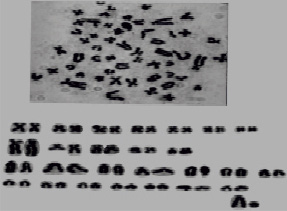
Fig. 8. The karyotype Microtus Kirgizorum Ognev of Kemin population
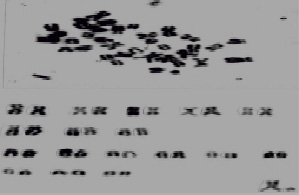
Fig. 9. The karyotype Microtus gregalis Pallas of Kemin population
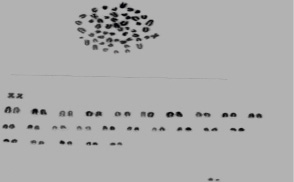
Fig. 10. The karyotype Ellobius talpinus Pallas of Kemin population
Chromosomal polymorphism of some mammals, living in Kemin region
|
Studied species |
Sex |
2n |
NFa |
M |
Sm |
St |
A |
Sex chromosomes |
Peculiarities |
|
Marmota baibacina of Kemin population |
> |
38 |
70 |
12 |
12 |
10 |
2 |
X(M), Y(Sm) |
– |
|
Marmota baibacina of Karatal-Zhapyryksky population [1, 78] |
38 |
74 |
8 |
18 |
8 |
4 |
Sex chromosomes are not identified |
– |
|
|
Dryomus nitedula of Kemin population |
+ |
48 |
90 |
16 |
18 |
10 |
2 |
X(Sm), X(Srn) |
– |
|
Dryomus nitedula of Kadamjaypopulation [5, 147] [6, 81] |
> |
48 |
90 |
18 |
20 |
6 |
2 |
X(St), Y)A) |
– |
|
Sicistsа tianschanica of Chon-Kemin population |
+ |
32 |
54 |
10 |
8 |
6 |
6 |
X(Sm), X(St) |
– |
|
Sicista tianschanica ofIssyk Kulpopulation [1, 102] [3, 102] |
> |
32 |
56 |
10 |
12 |
4 j 4 |
X(A-St),Y(A) |
– |
|
|
Meriones tamariscinus of Kemin population |
+ |
40 |
74 |
14 |
10 |
122 |
2 |
X(M), X(M) |
Acentrics are found |
|
Meriones tamariscinus of Toktogul population [4, 147] |
40 |
74 |
4 metaphase plates are determined |
||||||
|
Мicrotus gregalis of Kemin population |
> |
36 |
50 |
10 |
6 |
- |
18 |
X(M), Y(A) |
– |
|
Microtus gregalis of Aksay population |
> |
36 |
50 |
10 |
4 |
4 |
16 |
X(Sm), Y(M) |
– |
|
Ellobius talpinus of Kemin population |
+ |
54 |
54 |
2 |
- |
50 |
X(A), X(A) |
Acentrics are found |
|
|
Ellobius talpinusof Chuya, IssykKul population [7, 91] |
+ |
54 52 56 |
NF = 56 |
2 |
- |
... |
50 |
X(A), X(A) X(A), Y(A) |
Heterotrophs are determined |
Microtus gregalis Pallas. The karyotype of narrow-skulled vole of Kemin population consists of diploid number of chromosomes 2n = 36. Arms of autosomes are NFa = 50. Autosomes consist of 3 morphological groups of chromosomes. The first group is 5 pairs of metacentric, the second group is 3 pairs of submetacentric and the third group is 9 acrocentric chromosomes. All groups are made according to decreasing row in size. Heterochromosomes: X chromosome consists of large metacentrics, Y chromosome – of smaller acrocentrics. The karyotype of narrow-skulled vole of Kemin population was compared with the karyotype of Aksai population consisting of the diploid number of 2n = 36, NFa = 50. The compared karyotypes of populations differ in morphology of autosomes, and in morphology of geterohromosomes. Thus, on the basis of these comparisons spatial and biotopical chromosomal polymorphism of narrow-skulled vole karyotypes can be seen.
Ellobius talpinus Pallas. According to our data, the karyotype ofnorthern mole vole of Kemin population consists diploid set ofchromosomes 2n = 54, arms of autosomes are NFa = 54. Sex chromosomes are acrocentrics. When analyzing the karyogram common vole of populations Kemin it can can be noted that there are no sharp differences in the morphology of the chromosomes, metacentrics can be seen only in two points, the rest are acrocentric chromosomes. Acentric sets are found in metaphase plates of northern mole vole, like tamarisk gerbil. We associate this peculiarity with the conditions of the natural radiation background of this environment – “living space”. Due to the influence of this physical factor the same phenomenon as in the karyotype of tamarisk gerbil is observed.
Based on the conducted karyological researches of cytogenetics of some mammals of Kemin population the above-mentioned information can be summarized. The stability of karyotypes of eared hedgehog, common pipistrelle, wood mouse and grey hamster is seen in the number of chromosomes and morphology in all investigated “living spaces”. Variability of karyotypes offorest dormouse, Tien Shan birch mouse, tamarisk gerbil, narrow-skulled vole, northern mole vole, gray marmot is manifested in the form of spatial and biotopical chromosomal polymorphism (table).
Due to the increase of the natural radiation background in certain local areas acentrics are formed in the karyotypes of tamarisk gerbil, northern mole vole, Kyrgyz field vole.

